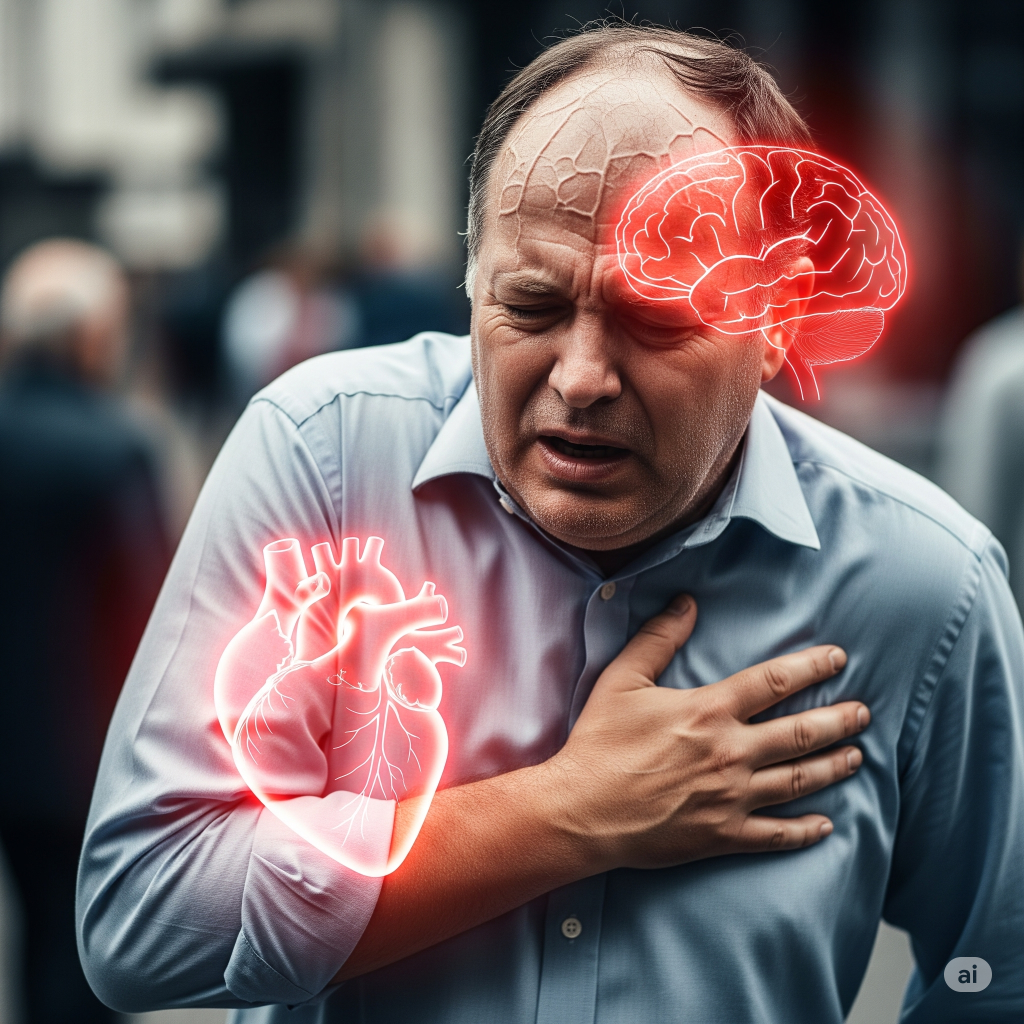A heart attack (myocardial infarction) occurs when blood flow to part of the heart muscle is suddenly blocked, usually by a clot in a coronary artery, causing the heart tissue to be starved of oxygen and damaged.
A stroke happens when blood supply to part of the brain is interrupted, either by a clot blocking an artery (ischemic stroke) or by a blood vessel bursting and bleeding into the brain (hemorrhagic stroke). In both cases, the lack of oxygen quickly injures vital tissue, making them life-threatening emergencies that require immediate medical care.

❤️ Heart Attack (Myocardial Infarction)
Types of Heart Attacks
STEMI (ST-Elevation Myocardial Infarction)
- The most severe type.
- Caused by a complete blockage of a coronary artery.
- Shows as ST-segment elevation on an ECG.
- Requires emergency treatment (angioplasty or thrombolysis).
NSTEMI (Non–ST-Elevation Myocardial Infarction)
- Caused by partial blockage of a coronary artery.
- No ST elevation on ECG, but cardiac enzymes (like troponin) are elevated.
- Less severe than STEMI, but still dangerous.
Silent Heart Attack
- Occurs without typical chest pain symptoms.
- Symptoms may be mild (fatigue, shortness of breath, indigestion-like feeling).
- Often discovered later during tests.
Coronary Artery Spasm (Prinzmetal’s Angina)
- Temporary narrowing of the coronary arteries due to spasm.
- Can cause chest pain and sometimes heart attack.
- Often occurs at rest or during the night.
Heart Attack (Myocardial Infarction) – Treatment
- Immediate goal: Restore blood flow to the heart muscle.
- Emergency care may include:
- Aspirin to reduce blood clotting.
- Clot-busting drugs (thrombolytics) if given early.
- Angioplasty and stent placement to open blocked arteries.
- Coronary artery bypass surgery (CABG) in severe cases.
- Long-term management: Medications (beta-blockers, statins, ACE inhibitors, antiplatelet drugs) + lifestyle changes (healthy diet, exercise, no smoking).
Treatment:
- Immediate goal: Restore blood flow to the heart muscle.
- Emergency care may include:
- Aspirin to reduce blood clotting.
- Clot-busting drugs (thrombolytics) if given early.
- Angioplasty and stent placement to open blocked arteries.
- Coronary artery bypass surgery (CABG) in severe cases.
- Long-term management: Medications (beta-blockers, statins, ACE inhibitors, antiplatelet drugs) + lifestyle changes (healthy diet, exercise, no smoking).

🧠 Stroke
Types of Stroke
Ischemic Stroke (≈ 85% of cases)
- Caused by a blood clot blocking a brain artery.
- Thrombotic Stroke: clot forms in a brain artery itself (often due to atherosclerosis).
- Embolic Stroke: clot forms elsewhere (like in the heart) and travels to the brain.
Hemorrhagic Stroke
- Caused by a ruptured blood vessel leading to bleeding in or around the brain.
- Intracerebral Hemorrhage (ICH): bleeding directly into brain tissue.
- Subarachnoid Hemorrhage (SAH): bleeding into the space around the brain, often from an aneurysm rupture.
Transient Ischemic Attack (TIA, or “Mini-Stroke”)
- A temporary blockage of blood flow to the brain.
- Symptoms last minutes to hours, with no permanent damage.
- Warning sign for future stroke.
Treatment :
- Immediate goal: Restore blood flow to the brain or stop bleeding, depending on type.
- Ischemic stroke (clot-related):
- Clot-dissolving drug (tPA) if given within a few hours.
- Mechanical thrombectomy (removing the clot with a device).
- Hemorrhagic stroke (bleeding):
- Control bleeding and reduce brain pressure (medications, surgery, or repair of blood vessels).
- Rehabilitation: Physical, occupational, and speech therapy to recover lost functions.
- Prevention of recurrence: Medications (antiplatelets, anticoagulants, statins, blood pressure drugs) + lifestyle modifications.